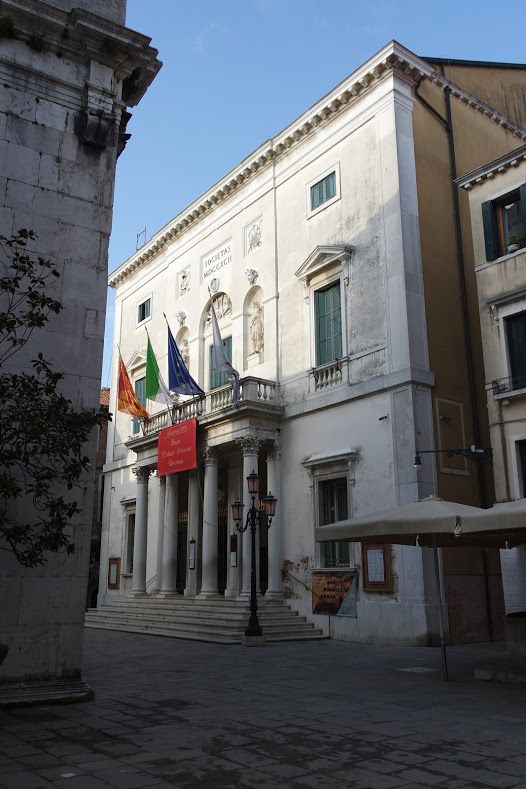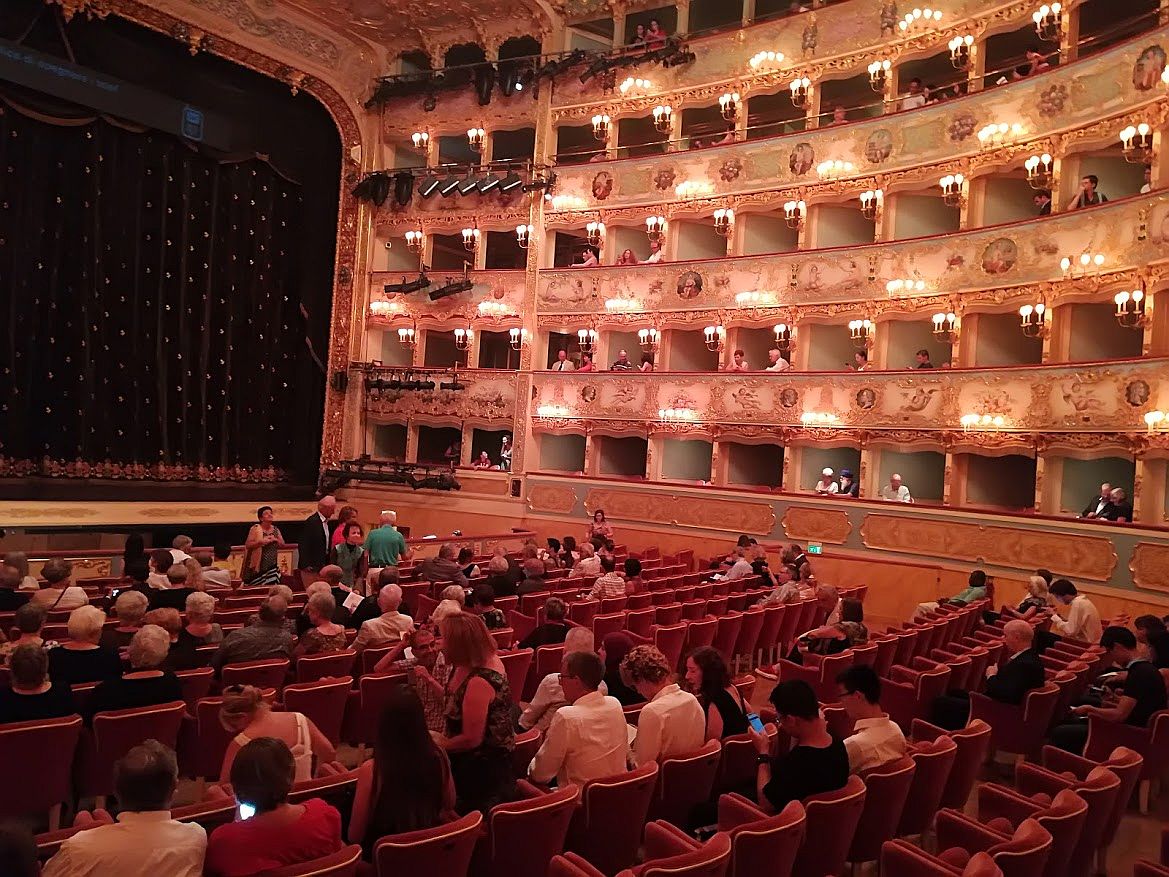
I don’t often watch New Year’s Day concerts on television (or computer), but lots of people veer toward the version from Vienna, perhaps drawn by the irresistible, fatal lure of the “Radetzky March.”
This year, though, we were keen to see the concert from La Fenice, live via streaming, and apart from the music itself, I was entertained by observing all the measures the orchestra and chorus had taken to maintain distancing and otherwise limit contact in the decidedly closed area of the theatre. I checked them off, mentally, as from some viral bingo card. Masks, of course, though the inevitably maskless wind and brass players were separated by plexiglas panels. The chorus wore masks, which didn’t seem to affect the quality of the singing but must have been somewhat challenging where breathing was concerned. (Not to mention the drippage that masks inevitably call forth.) The next day it was sharply noted by many that the musicians of the Vienna concert had not worn masks.
Making space for everybody meant that the entire orchestra section of the theater was stripped of its pink velvet armchairs and covered with a platform. (Some of the armchairs were moved to the stage for the benefit of the singers.) I’d like some expert to explain how this repositioning might have affected the overall acoustics. I didn’t notice any particular problem.
Lack of an audience threatened depressing intervals of silence between the numbers, but it turned out that the performers applauded each other — the chorus clapped for the orchestra or soloists; the orchestra stamped their feet and the string players also tapped their music stands with their bows. The conductor clapped for everybody. It was perfect.

Naturally the program was entirely composed of old warhorses, and we love them all. This is one moment in the year when rash experiments in music are neither needed nor wanted.
The reason I’m mentioning all this is because someone had the charming idea to complement the “Barcarolle” from The Tales of Hoffman with a ride through the canals aboard a gondola. Even if you don’t care about music, old or equine, I wanted you to experience this sensation, partly because it has become sadly rare these days, and partly because these few waterborne moments give the most expressive glimpse of the city as she is at the moment that I’ve ever seen. I suppose it was filmed early on a Sunday, because although the taxis and gondolas have almost disappeared, the barges on workdays are still going full tilt. But the sense of emptiness, in canals and along many streets, has become all too common.
Among my many hopes for the New Year is one in particular: To see the city full of gondolas again, slipping through the maze of Venetian waterways. With or without Hoffman.
(Apologies for the quality of these clips; I couldn’t find any better. But they show the organization of the concert, and the music itself is wonderful, as always.)
